Take Me to the 26 Armenian Recipes
Armenian food, with its distinct flavors and traditional recipes, offers a delightful culinary experience that reflects the country’s rich history and diverse cultural influences. It is Nestled in the South Caucasus region of Eurasia.
Armenia boasts a unique cuisine shaped by centuries of history, geography, and cultural heritage. From the highlands to the lowlands, the country’s varied landscapes play a significant role in influencing the ingredients and cooking methods of Armenian dishes.
Armenia, situated in the mountainous South Caucasus, experiences a continental climate with cold winters and hot summers. The breathtaking scenery includes mountain ranges, lush valleys, and the stunning Lake Sevan. With a population of around three million, Armenia has a vibrant culture that resonates in its food, one of the key elements that define the nation.
Read on to discover the captivating world of Armenian cuisine, from its historical roots to the delicious recipes that grace Armenian tables.
Take Me to the 26 Armenian Recipes
Armenian Food – Key Takeaways
- Rich Culinary Heritage: Armenian cuisine is deeply rooted in the country’s history, showcasing influences from Persian, Mediterranean, and Middle Eastern cultures.
- Unique Ingredients: Dishes often feature locally sourced ingredients such as lamb, eggplant, and apricots, contributing to the distinct flavors of Armenian food.
- Traditional Cooking Techniques: Grilling, roasting, and slow-cooking are prevalent methods, highlighting the importance of preserving the natural flavors of the ingredients.
- Symbolism in Armenian Cuisine: Many Armenian dishes have cultural or religious significance, with rituals and traditions often intertwined with the act of preparing and sharing meals.
- Health Benefits of Armenian Dishes: The cuisine emphasizes fresh and natural components, providing a balance of nutrients and contributing to a healthy lifestyle.
- Bread, a Staple of Armenian Cuisine: Lavash, a thin unleavened flatbread, is a staple in Armenian cuisine, often used to wrap or accompany various dishes.
- Celebration through Armenian Food: Festive occasions are marked by elaborate feasts, where families come together to enjoy an array of dishes, showcasing the warmth of Armenian hospitality.
Take Me to the 26 Armenian Recipes
Where is Armenia?


Index
- Take Me to the 26 Armenian Recipes
- Armenian Food – Key Takeaways
- Armenian History and the Affect It Has Had on the Cuisine
- How Armenia’s Climate and Geography Have Influenced Armenian Food
- Understanding the Essence of Armenian Food
- Culinary Traditions
- What are the Health Implications of Armenian Cuisine?
- Armenia’s National Dish
- The Armenian Diet
- Q&A’s
Take Me to the 26 Armenian Recipes
Armenian History and the Affect It Has Had on the Cuisine
Armenian history and cuisine are closely intertwined, as they reflect the influences of various cultures and civilizations that have ruled or interacted with the region over the centuries. Some of the main historical factors that have affected the cuisine are:
Ancient trade
Armenia was an important trading center in ancient times, connecting the civilizations of Mesopotamia, India, Persia, Greece, and Rome. Armenia’s cuisine incorporates ingredients and dishes from different regions, such as rice, dates, saffron, cardamom, turmeric, cinnamon, and cloves.
Armenia also developed its own wine culture, which dates back to the 6th millennium BCE
Christian Conversion
Armenia was the first country to adopt Christianity as its official religion in the 4th century CE. Christianity influenced the cuisine by introducing fasting periods, during which meat, dairy, and eggs were prohibited.
Armenians developed many vegetarian and vegan dishes, such as dolma (stuffed grape leaves or peppers), spas (yogurt soup), and gata (sweet bread).
Christianity also influenced the cuisine by celebrating religious holidays, such as Easter and Christmas, with special dishes, such as harissa (wheat and chicken porridge) and anoush abour (sweet wheat soup)
Ottoman rule
Armenia was conquered by the Ottoman Empire in the 16th century and remained under its rule until the 20th century. The Ottomans introduced many dishes and ingredients from their Turkish and Middle Eastern cuisine, such as kebab (grilled meat), baklava (nut-filled pastry), coffee, and yogurt.
The Ottomans also imposed the Islamic dietary laws, which prohibited pork and alcohol. However, many Armenians continued to consume these products in secret or in remote areas.
Genocide and diaspora
Armenia suffered a genocide at the hands of the Ottoman Turks in 1915-1917, which claimed more than a million lives and displaced millions more. Many survivors found refuge in various parts of the world, such as Russia, France, Iran, Lebanon, and the United States.
The Armenian diaspora preserved and adapted their cuisine to their new environments, while also influencing the cuisines of their host countries. For example, the Armenian community in Lebanon introduced lahmajoun (meat-topped flatbread) and basturma (cured beef) to the local cuisine.
How Armenia’s Climate and Geography Have Influenced Armenian Food
The diverse geography and climate of Armenia have a profound impact on the ingredients available and the way they are prepared. The country’s mountainous terrain influences the types of crops that thrive, leading to an emphasis on hearty vegetables, grains, and fruits.
The continental climate, with cold winters and hot summers, shapes the preservation methods and cooking techniques employed in Armenian kitchens.
Take Me to the 26 Armenian Recipes
Understanding the Essence of Armenian Food
At the heart of Armenian food is a deep connection to the land and an appreciation for simplicity. The essence of Armenian cuisine lies in the use of fresh, high-quality ingredients prepared with care.
Each dish tells a story, from the symbolism in the choice of ingredients to the traditional methods passed down through generations. The food is not just sustenance; it’s a cultural expression and a source of pride for the Armenian people.
Armenian Culinary Traditions
The culinary traditions are a testament to the importance of family, community, and celebration. The preparation of meals is often a communal activity, with generations coming together to share knowledge and techniques.
Special occasions, religious events, and holidays are marked by the creation of elaborate feasts, showcasing the diversity and richness of Armenian dishes.
Take Me to the 26 Armenian Recipes
What Are the Health Implications of Armenian Cuisine?
According to the World Health Organization, the population of Armenia was 2,963,243 in 2020, with a life expectancy at birth of 75.1 years. The main causes of death in 2019 were ischemic heart disease, stroke, diabetes mellitus, prostate cancer, and breast cancer.
The prevalence of overweight and obesity among people aged 15 and older was 48% in 2016.
Armenian cuisine, rich in flavors and diverse ingredients, has both positive and potentially health-related implications. Here are some aspects to consider:
Healthy Aspects:
- Nutrient-Rich Ingredients:
- Armenian cuisine often incorporates a variety of nutrient-dense foods, including fresh vegetables, fruits, whole grains, and lean proteins.
- Olive Oil Usage:
- Olive oil, a staple in Armenian cooking, is a source of heart-healthy monounsaturated fats. It is associated with improved cardiovascular health.
- Lean Proteins:
- Grilled meats and fish are common in Armenian dishes, providing essential proteins with lower saturated fat content compared to fried alternatives.
- Fiber-Rich Foods:
- Many Armenian dishes contain fiber-rich ingredients like lentils, beans, and whole grains, supporting digestive health and providing a sense of fullness.
- Use of Fresh Herbs:
- Armenian recipes often incorporate fresh herbs like parsley, cilantro, and dill, providing not only flavor but also additional nutrients and antioxidants.
Considerations:
- Salt Content:
- Some Armenian dishes may contain higher levels of salt, which, if consumed excessively, can contribute to high blood pressure. Moderation is key.
- Caloric Density:
- Certain traditional Armenian dishes can be calorie-dense, particularly those with generous amounts of oils, nuts, or dairy. Portion control is crucial.
- Refined Carbohydrates:
- Some recipes might include refined carbohydrates, which, when consumed in excess, can contribute to weight gain and blood sugar fluctuations. Opting for whole grains when possible is advisable.
- Dairy and Lactose:
- Armenian cuisine may include dairy products. Individuals with lactose intolerance should be mindful, but there are often lactose-free alternatives available.
Cultural and Social Aspects:
- Social Connection:
- Armenian meals are often shared with family and friends, emphasizing social connections, which can positively impact mental well-being.
- Culinary Diversity:
- Armenian cuisine’s diversity allows for a range of choices, promoting a balanced diet with various nutrients.
As with any cuisine, moderation, variety, and mindful choices are key to enjoying Armenian dishes while promoting overall health and well-being. Individual health considerations may vary, and consulting with a healthcare professional or nutritionist can provide personalized advice.
Armenia’s National Dish
One dish that stands out as the national pride of Armenia is “Khorovats,” a traditional Armenian barbecue. This grilled meat dish, often made with lamb or pork, is marinated in a mixture of herbs and spices, then cooked over an open flame.
Khorovats is a symbol of Armenian hospitality, as it is commonly enjoyed during gatherings and celebrations.
The Armenian Diet
The Armenian diet is a reflection of the country’s rich cultural and historical tapestry, blending flavors and traditions that have evolved over centuries. At its core, the Armenian diet emphasizes fresh, locally sourced ingredients, celebrating the bounty of the region’s fertile lands.
Armenians have a deep connection to grains, with wheat and bulgur featuring prominently in staple dishes like lavash (flatbread) and khorovats (grilled meat). Vegetables play a crucial role, with eggplant, tomatoes, and peppers often taking center stage in dishes like dolma (stuffed grape leaves) and ajapsandali (vegetable stew).
Protein sources include lamb, beef, and poultry, contributing to hearty and flavorful meals. Yogurt, a staple dairy product, is commonly used in both savory and sweet dishes, offering a refreshing contrast to the richness of meats and grains.
Herbs like parsley, cilantro, and mint add vibrancy to Armenian cuisine, enhancing the overall taste profile. The diet is also characterized by an array of sweets, including pakhlava and gata, showcasing the Armenian love for intricate pastries and sweet treats.
In essence, the Armenian diet is a harmonious blend of tradition and innovation, a culinary journey that tells the story of a resilient and diverse culture through its delightful and wholesome dishes.
Take Me to the 26 Armenian Recipes
A Typical Armenian Meal
A typical Armenian meal is a symphony of flavors and textures, showcasing the country’s culinary prowess. Meals often commence with an array of appetizers, such as mezze-style dishes. Hummus, baba ganoush, and muhammara are served alongside lavash, the traditional Armenian flatbread.
The main course often features khorovats, succulent grilled meats marinated with aromatic spices. This centerpiece is complemented by a variety of side dishes like dolma, a dish of grape leaves stuffed with a flavorful mixture of rice and minced meat, and lavash-wrapped kebabs.
Armenian meals also highlight the importance of fresh and vibrant salads, typically prepared with tomatoes, cucumbers, and a medley of herbs. A dollop of tangy matzoon (yogurt) may accompany these dishes, offering a cooling contrast.
Desserts hold a special place in Armenian dining, with pastries like gata and pakhlava stealing the show. Gata, a sweet bread filled with nuts and spices, and pakhlava, a layered pastry soaked in honey, provide a delightful conclusion to the meal.
A traditional Armenian meal is not just about the food; it embodies a sense of community and hospitality, with families and friends coming together to share in the joy of good company and exceptional cuisine.
Armenian Sausages
Armenian sausages, known as “soudjouk” or “sujuk,” are a flavorful and distinctive addition to Armenian cuisine. These sausages have a rich history, influenced by the region’s diverse culinary traditions.
Typically made from ground meat, commonly beef or lamb, they are seasoned with a unique blend of spices such as garlic, cumin, and paprika, imparting a robust and aromatic taste.
The sausages are often air-dried or cured, allowing the flavors to intensify. Soudjouk can be enjoyed in various ways, from grilling and pan-frying to being incorporated into stews and sandwiches.
Its versatility makes it a beloved ingredient, while the well-balanced blend of spices sets Armenian sausages apart, adding depth to the country’s culinary repertoire. Whether enjoyed as part of a meal or as a snack, Armenian sausages are a testament to the skillful artistry embedded in Armenian gastronomy.
Take Me to the Armenian Dishes
More Articles for Your Pleasure
- North and South American Cuisine – A Culinary Expedition
- European Cuisine: Savor the Continent’s Best Culinary Secrets!
- African Cuisine: Discover the Bold Flavors & Global Charm!
- Asian Cuisine Unlock its Secrets – Taste, Health & Global Influence!
- Oceania Cooking: A Culinary Journey Through the Pacific
Savor iconic Armenian Dishes – Click on each tantalizing picture to open up the Recipe.
Armenian cuisine showcases a rich tapestry of flavors, with each ingredient playing a crucial role in creating the distinctive taste of the dishes.
From the earthy sweetness of apricots to the bold flavors of herbs like parsley and cilantro, Armenian ingredients are carefully selected to highlight the natural essence of the region.
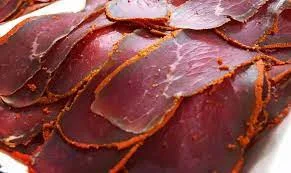
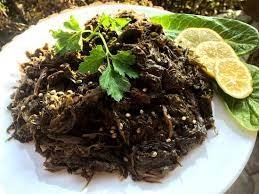
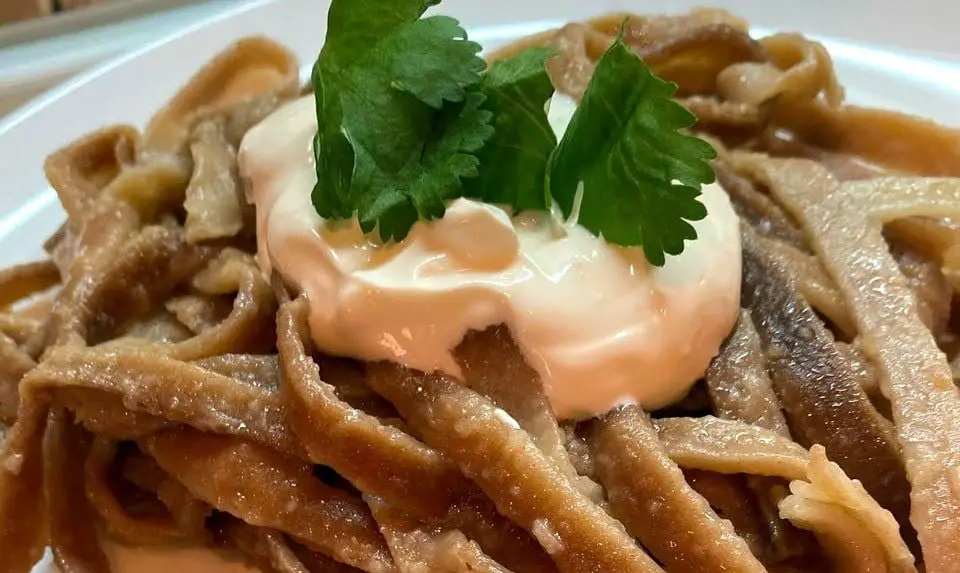
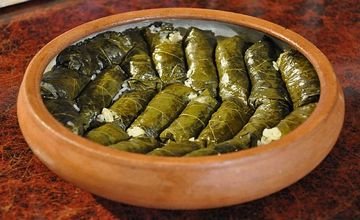
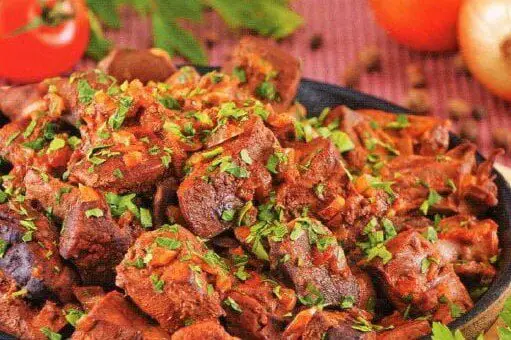
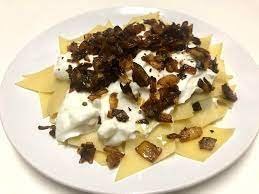
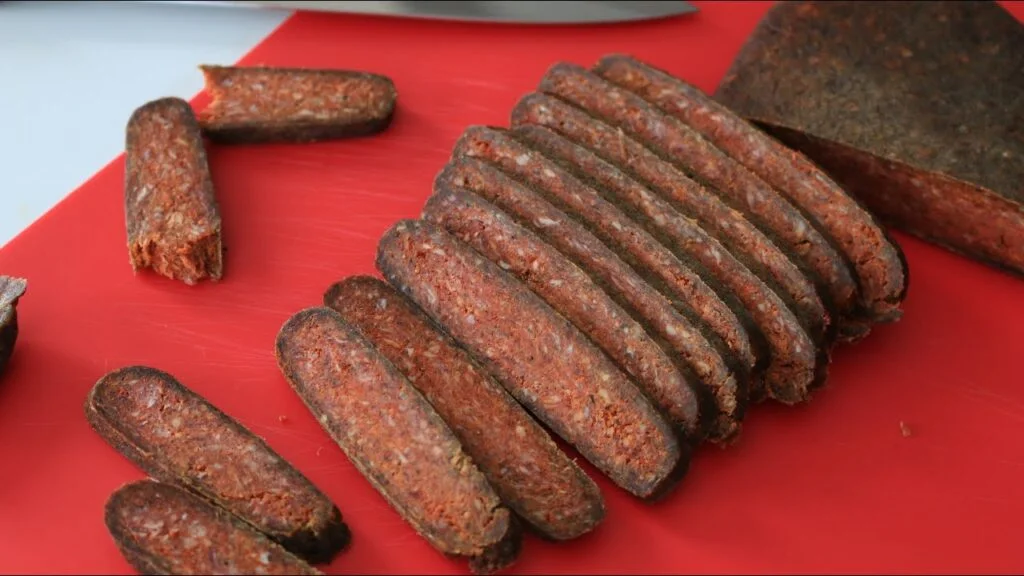
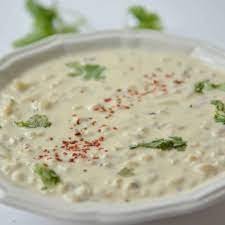
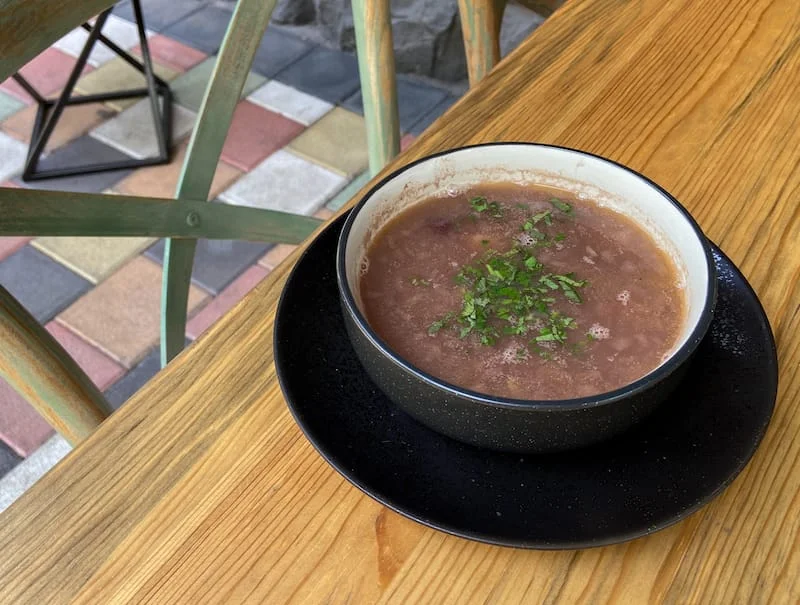
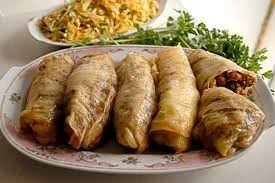
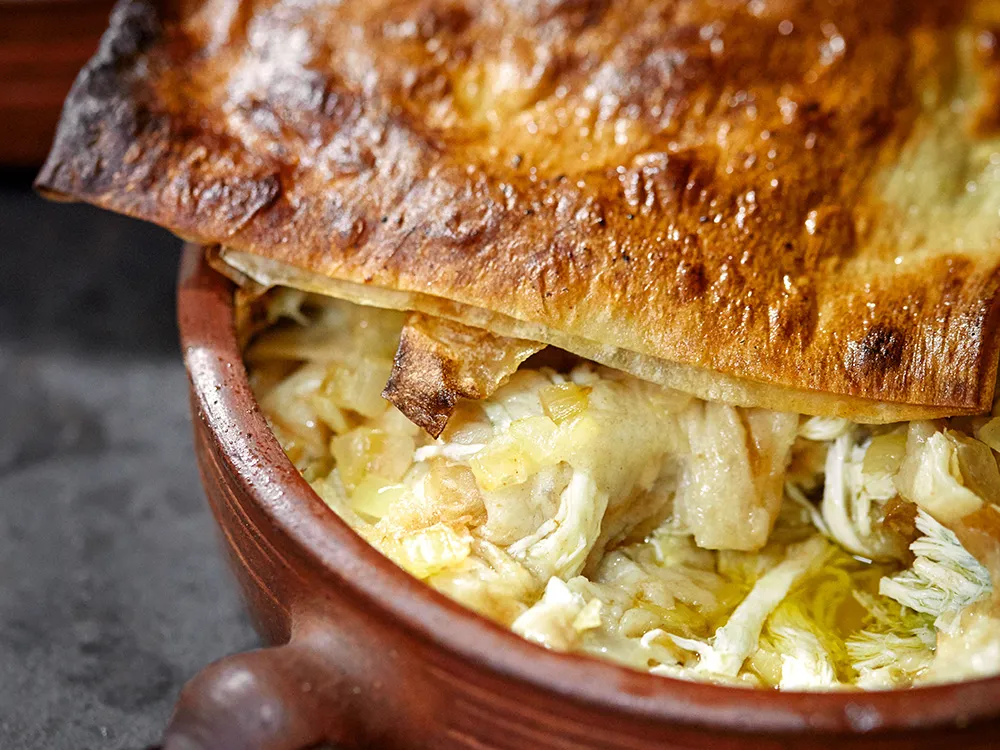
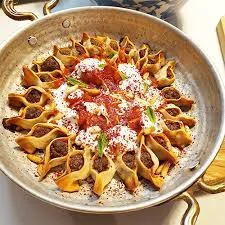
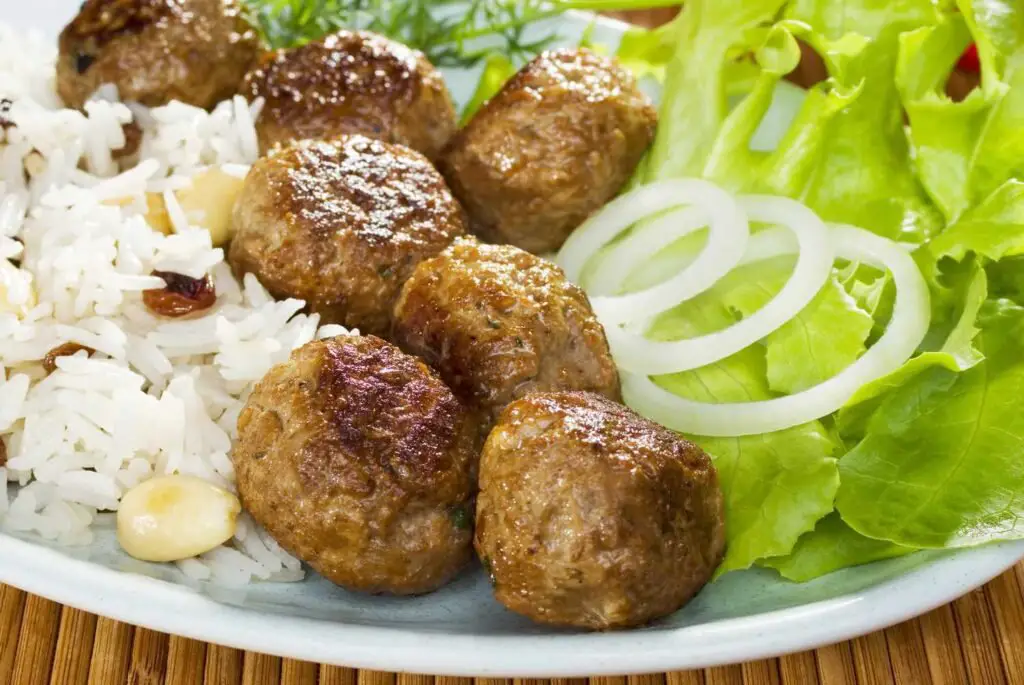
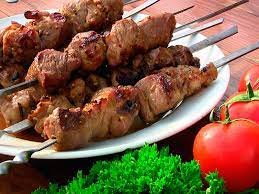
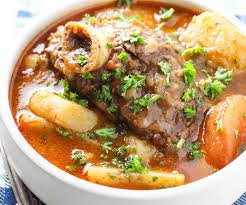
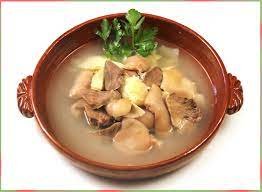
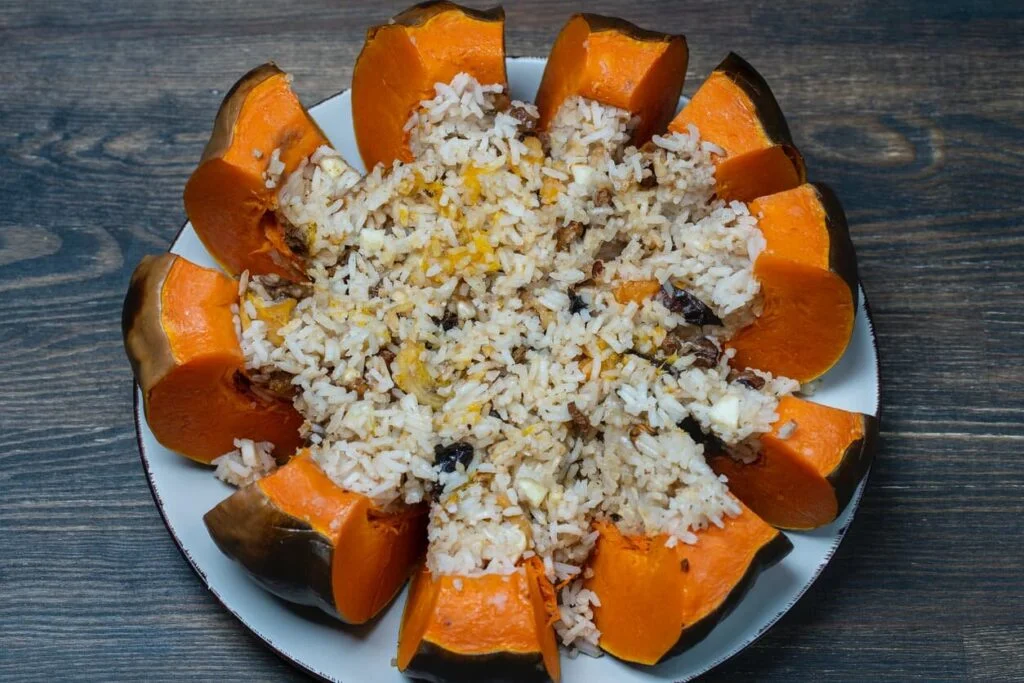
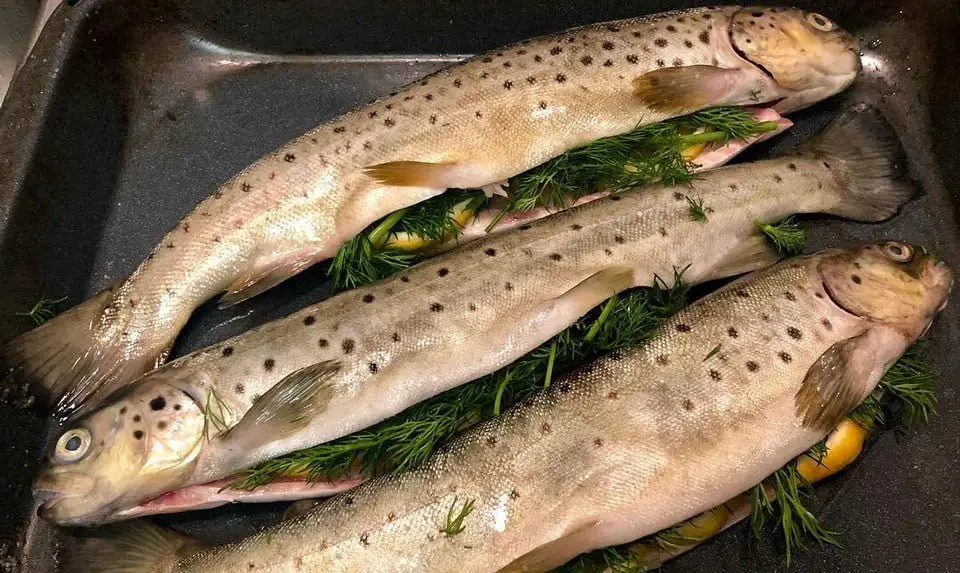
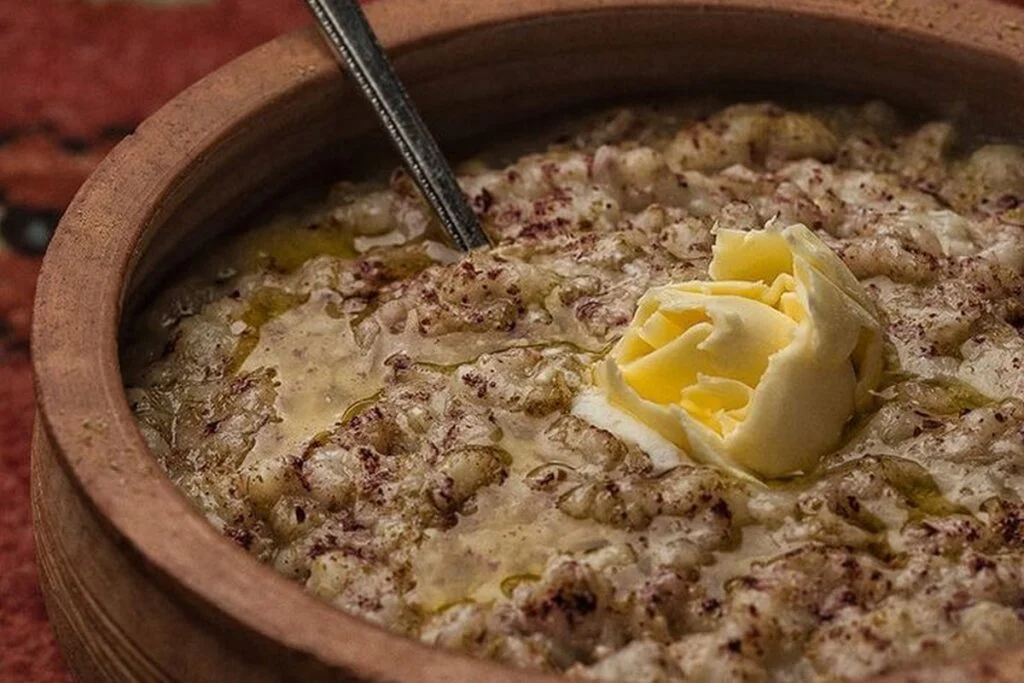

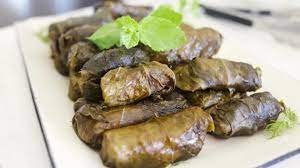


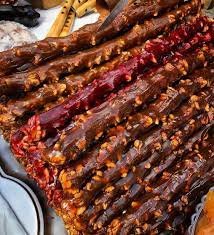
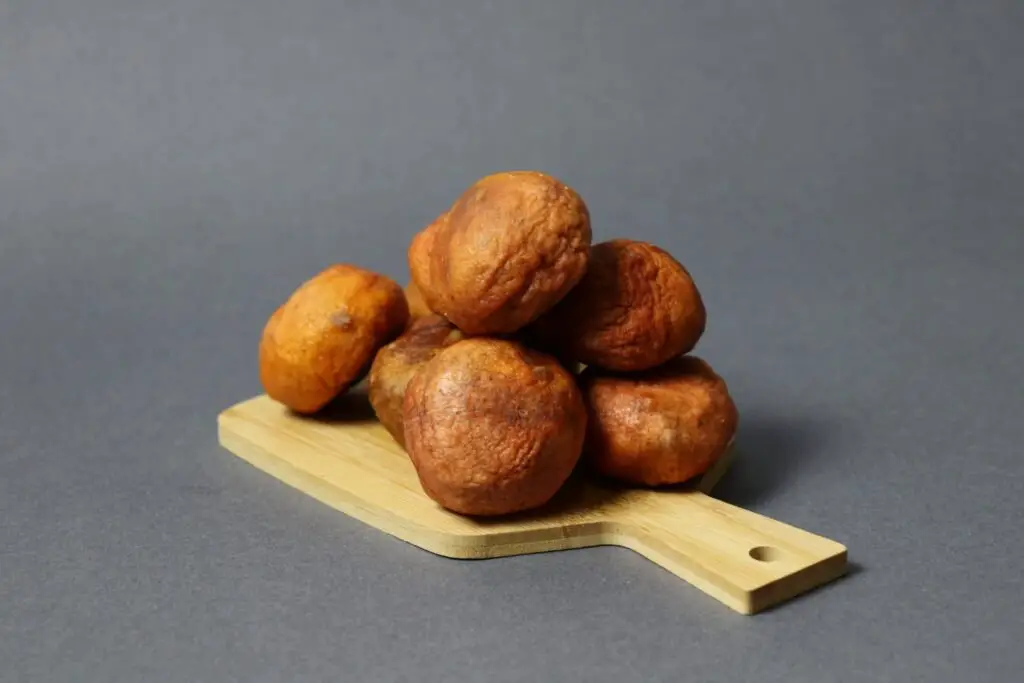

Armenian Dishes – Great Examples to Try at Home
Introduction
Armenian food, characterized by its use of fresh ingredients and traditional cooking methods, is a delightful journey for the taste buds. Whether you’re a seasoned cook or a beginner in the kitchen, exploring Armenian recipes provides an opportunity to savor the rich flavors and cultural significance of this cuisine.
Overall Description
Armenian cuisine is a celebration of simplicity and depth of flavor. From succulent kebabs to comforting stews, the recipes encompass a wide range of dishes that cater to various tastes and preferences.
Here are 27 examples of Armenian recipes that you can try at home to experience the true essence of this culinary tradition:
Prepare these dishes with love and enjoy the culinary journey that Armenian food offers, bringing the warmth of Armenia’s traditions into your home.
Armenian Food – Aveluk Salad

History, Background, and Region of Origin for Aveluk Salad
Aveluk Salad is a classic Armenian dish rooted in the country’s rich culinary history. Armenia, situated in the South Caucasus region of Eurasia, boasts a diverse landscape that influences its traditional cuisine.
Aveluk, also known as wild sorrel, is a key ingredient in this salad, reflecting Armenia’s connection to nature and the use of locally sourced produce. This refreshing salad embodies the essence of Armenian hospitality and the vibrant flavors unique to the region.
Armenian Food – Aveluk Salad Ingredients
- 2 cups fresh Aveluk (wild sorrel), washed and chopped
- 1 cup cherry tomatoes, halved
- 1 cucumber, diced
- 1 red onion, finely sliced
- 1/2 cup radishes, thinly sliced
- 1/2 cup crumbled feta cheese
- 1/4 cup extra virgin olive oil
- 2 tablespoons red wine vinegar
- Salt and pepper to taste
Armenian Food – Aveluk Salad Recipe
Preparation (Serves 4):
Estimated Cooking Time: 15 minutes
Calories (per serving): Approximately 150 calories
Ingredients Preparation:
1. Prepare Aveluk:
- Wash and chop the fresh aveluk (wild sorrel).
2. Chop Vegetables:
- Halve cherry tomatoes.
- Dice cucumber.
- Finely slice red onion.
- Thinly slice radishes.
Salad Assembly:
3. Combine Ingredients:
- Step 1: In a large salad bowl, combine aveluk, cherry tomatoes, cucumber, red onion, and radishes.
4. Add Feta Cheese:
- Step 2: Gently crumble feta cheese over the salad.
5. Prepare Dressing:
- Step 3: In a small bowl, whisk together extra virgin olive oil and red wine vinegar.
6. Season the Salad:
- Step 4: Pour the dressing over the salad, ensuring all ingredients are well-coated.
- Step 5: Season with salt and pepper to taste.
7. Toss and Serve:
- Step 6: Gently toss the salad to combine all ingredients.
- Step 7: Serve immediately as a refreshing side dish or a light main course.
Serving Suggestions:
Serve Aveluk Salad as a side dish to complement grilled meats or enjoy it on its own for a nutritious and flavorsome meal. This salad captures the essence of Armenian cuisine, offering a perfect balance of freshness and distinct regional flavors.
Armenian Food – Basturma

History, Background, and Region of Origin for Basturma
Basturma, a staple in Armenian cuisine, has a storied history that dates back centuries. Originating from the Armenian Highlands and the Middle East, this cured and air-dried beef showcases the region’s mastery in preserving meats.
Traditionally, basturma was crafted by seasoning beef with a unique blend of spices, air-drying it, and then coating it with a layer of crushed fenugreek, creating a distinctive flavor profile. Today, basturma remains a beloved dish in Armenian households and has spread its influence to various regions.
Armenian Food – Basturma Ingredients
- 2 pounds beef (top or bottom round)
- 1 cup sea salt
- 1/2 cup paprika
- 1/4 cup crushed fenugreek seeds
- 1/4 cup ground black pepper
- 1/4 cup ground coriander
- 1 tablespoon garlic powder
- 1 tablespoon cayenne pepper (adjust to taste)
- 1/2 cup olive oil (for coating)
- Butcher’s twine for tying
Armenian Food – Basturma Recipe
Preparation (Serves 8):
Estimated Cooking Time: 10-15 days (including drying time)
Calories (per serving): Approximately 200 calories
Ingredients Preparation:
1. Prepare the Beef:
- Step 1: Trim excess fat from the beef and cut it into flat, rectangular pieces.
2. Season the Beef:
- Step 2: In a bowl, mix together sea salt, paprika, crushed fenugreek seeds, black pepper, coriander, garlic powder, and cayenne pepper.
- Step 3: Coat each piece of beef thoroughly with the spice mixture.
3. Layering and Marinating:
- Step 4: Place the seasoned beef pieces in a large, shallow dish, layering them evenly.
- Step 5: Cover the dish with plastic wrap and refrigerate for 5-7 days, allowing the meat to marinate.
Drying Process:
4. Draining and Drying:
- Step 6: Remove the beef from the refrigerator and drain excess liquid.
- Step 7: Pat the beef dry with paper towels.
- Step 8: Thread the beef pieces onto a butcher’s twine, leaving space between each piece.
- Step 9: Hang the beef in a well-ventilated, cool area for 5-8 days until fully dried.
5. Coating with Oil:
- Step 10: Once dried, coat the basturma with olive oil for added flavor and to prevent excessive dryness.
6. Slice and Serve:
- Step 11: Remove the twine and thinly slice the basturma before serving.
Serving Suggestions:
Basturma is often enjoyed thinly sliced on its own, as part of a charcuterie board, or in sandwiches. Its bold flavors and unique texture make it a versatile and delectable addition to various culinary creations.
Armenian Food – Dolma

History, Background, and Region of Origin for Dolma
Dolma, a cherished dish in Armenian cuisine, has a history intertwined with the cultural tapestry of the Middle East and Eastern Mediterranean. Originating from the Armenian Highlands, this dish has ancient roots and has evolved over centuries.
Dolma typically consists of grape leaves stuffed with a flavorful mixture of rice, ground meat, and aromatic herbs. The dish reflects the region’s agrarian traditions and the skillful use of local ingredients, making it a symbol of Armenian culinary heritage.
Armenian Food – Dolma Ingredients
- 1 jar grape leaves, preserved in brine
- 1 cup medium-grain rice, washed and drained
- 1/2-pound ground beef or lamb
- 1 large onion, finely chopped
- 2 tomatoes, grated
- 1/2 cup fresh parsley, finely chopped
- 1/4 cup fresh mint, finely chopped
- 1/4 cup pine nuts
- 1/4 cup currants
- 1 teaspoon ground cinnamon
- 1 teaspoon ground allspice
- Salt and pepper to taste
- 1/2 cup olive oil
- 1 lemon, sliced (for garnish)
Armenian Food – Dolma Recipe
Preparation (Serves 6-8):
Estimated Cooking Time: 1 hour
Calories (per serving): Approximately 300 calories
Ingredients Preparation:
1. Prepare Grape Leaves:
- Step 1: Rinse grape leaves thoroughly in cold water to remove excess brine.
- Step 2: Blanch the grape leaves in boiling water for 2-3 minutes, then drain.
2. Prepare Filling:
- Step 3: In a large bowl, combine washed rice, ground meat, chopped onion, grated tomatoes, parsley, mint, pine nuts, currants, cinnamon, allspice, salt, and pepper.
- Step 4: Mix the ingredients thoroughly to create the stuffing.
Assembly and Cooking:
3. Stuff and Roll Grape Leaves:
- Step 5: Lay a grape leaf flat on a clean surface, shiny side down.
- Step 6: Place a small amount of the filling in the center of the leaf.
- Step 7: Fold the sides of the leaf over the filling and roll tightly.
- Step 8: Repeat until all leaves are filled and rolled.
4. Layer in the Pot:
- Step 9: Arrange dolma in layers in a large pot, placing them closely together.
- Step 10: Drizzle olive oil over the top layer.
5. Cooking:
- Step 11: Place a heatproof plate on top of the dolma to prevent them from unraveling during cooking.
- Step 12: Add enough water to cover the dolma, then bring to a gentle simmer.
- Step 13: Cover the pot and cook on low heat for 45-50 minutes or until the rice is fully cooked.
6. Serve:
- Step 14: Once cooked, remove dolma from the pot and arrange on a serving platter.
- Step 15: Garnish with lemon slices and serve warm.
Serving Suggestions:
Dolma is often served with a side of yogurt or a drizzle of olive oil. Enjoy the delicate flavors of this traditional Armenian dish that brings together the essence of the Mediterranean and the Middle East.
Armenian Food – Fruit Lavash

History and Background of Armenian Fruit Lavash
Armenian Fruit Lavash, a delightful culinary creation, finds its roots in the rich history of Armenian cuisine. Lavash, a traditional flatbread, has been a staple in Armenian households for centuries. While the classic version is savory, the fruit-infused adaptation adds a sweet twist to this beloved dish.
Armenia, nestled in the South Caucasus region, boasts a diverse culinary heritage influenced by its historical intersections with Persian, Ottoman, and Russian cultures. The incorporation of fruits reflects the abundance of orchards in the region, making Armenian Fruit Lavash a unique and flavorful delicacy.
Armenian Food – Fruit Lavash Ingredients
- 2 cups all-purpose flour
- 1 cup whole wheat flour
- 1/2 cup dried apricots, chopped
- 1/2 cup dried figs, chopped
- 1/2 cup raisins
- 1/2 cup dried cherries
- 1/2 cup walnuts, chopped
- 1/4 cup honey
- 1/4 cup olive oil
- 1 teaspoon salt
- 1 teaspoon ground cinnamon
- 1 teaspoon vanilla extract
- 1 cup warm water
Armenian Food – Fruit Lavash Recipe
1. Prepare the Dough
- In a large mixing bowl, combine the all-purpose flour, whole wheat flour, and salt.
- Gradually add warm water and olive oil, kneading the mixture until it forms a smooth, elastic dough.
- Cover the bowl with a damp cloth and let the dough rest for about 30 minutes.
2. Incorporate Fruits and Nuts
- Preheat the oven to 350°F (175°C).
- Roll out the rested dough on a floured surface, creating a rectangle.
- Evenly distribute dried apricots, figs, raisins, cherries, and chopped walnuts on the dough.
- Drizzle honey over the fruit and nut mixture.
- Sprinkle ground cinnamon and add vanilla extract.
3. Roll and Bake
- Carefully roll the dough, creating a log shape with the fruit and nut filling enclosed.
- Place the rolled dough on a baking sheet lined with parchment paper.
- Bake in the preheated oven for 25-30 minutes or until the lavash turns golden brown.
4. Cool and Serve
- Allow the Armenian Fruit Lavash to cool before slicing it into rounds.
- Serve the sweet lavash as a delightful accompaniment to tea or coffee.
Serving: This recipe serves approximately 8 people.
Cooking Time: Approximately 1 hour (including resting and baking).
Calories: The total calorie count for this recipe is approximately 2,200 calories. (Note: Nutritional values may vary based on specific brands and quantities used.)
Armenian Food – Gata

History and Background of Chinese Steamed Dumplings
Chinese Steamed Dumplings, known as “Xiao Long Bao” in Mandarin, have a storied history rooted in the culinary traditions of China. Originating from the Jiangnan region, particularly Shanghai, these dumplings gained popularity during the Ming Dynasty. Characterized by their delicate, thin wrappers and flavorful fillings, Xiao Long Bao have become a beloved dish both within China and internationally.
The method of steaming dumplings with a rich, savory broth encapsulated within has made them a hallmark of Chinese cuisine, showcasing the country’s commitment to intricate flavors and culinary craftsmanship.
Armenian Food – Gata Ingredients
- 2 cups all-purpose flour
- 1 cup boiling water
- 1/2 pound ground pork
- 1/2 cup finely chopped napa cabbage
- 2 tablespoons soy sauce
- 1 tablespoon sesame oil
- 1 tablespoon rice vinegar
- 1 tablespoon fresh ginger, minced
- 1 tablespoon garlic, minced
- 1 teaspoon sugar
- Salt and pepper to taste
- 1/4 cup green onions, finely chopped
Armenian Food – Gata Recipe
1. Prepare the Dough
- In a large bowl, gradually add boiling water to the all-purpose flour, stirring constantly.
- Knead the mixture into a smooth, elastic dough.
- Cover the bowl with a damp cloth and let the dough rest for 30 minutes.
2. Make the Filling
- In a mixing bowl, combine ground pork, chopped napa cabbage, soy sauce, sesame oil, rice vinegar, minced ginger, minced garlic, sugar, salt, and pepper.
- Mix the ingredients thoroughly until well combined.
- Stir in chopped green onions.
3. Assemble the Dumplings
- Roll the rested dough into a long, thin cylinder and cut it into small, equal-sized pieces.
- Flatten each piece into a round wrapper.
- Place a spoonful of the pork filling in the center of each wrapper.
- Pleat and fold the edges of the wrapper to create a sealed dumpling.
4. Steam the Dumplings
- Arrange the dumplings in a steamer, leaving space between each.
- Steam over boiling water for approximately 15-20 minutes or until the dumplings are cooked through.
5. Serve and Enjoy
- Carefully transfer the steamed dumplings to a serving plate.
- Serve hot with soy sauce or a dipping sauce of your choice.
Serving: This recipe makes approximately 20 dumplings.
Cooking Time: Approximately 1 hour (including resting and steaming).
Calories: The total calorie count for this recipe is approximately 1,800 calories. (Note: Nutritional values may vary based on specific brands and quantities used.)
Armenian Food – Ghapama

History and Background of Ghapama in Armenian Cuisine
Ghapama, a festive dish with deep cultural roots, hails from the heart of Armenian culinary traditions. Originating in the Lori region of Armenia, Ghapama is a celebratory dish often prepared during weddings, New Year’s, and other joyous occasions.
This stuffed pumpkin dish symbolizes abundance and prosperity, reflecting the agrarian heritage of the region. The combination of fragrant rice, dried fruits, and nuts encased in a pumpkin creates a dish that embodies the warmth and richness of Armenian hospitality.
Armenian Food – Ghapama Ingredients
- 1 large pumpkin
- 2 cups short-grain rice
- 1 cup dried apricots, chopped
- 1 cup raisins
- 1 cup prunes, pitted and chopped
- 1 cup dried apples, chopped
- 1 cup walnuts, chopped
- 1/2 cup sugar
- 1/2 cup butter, melted
- 1 teaspoon cinnamon
- 1/2 teaspoon ground cloves
- 1/2 teaspoon nutmeg
- Salt to taste
- Honey for drizzling
Armenian Food – Ghapama Recipe
1. Prepare the Pumpkin
- Cut off the top of the pumpkin, creating a lid. Scoop out the seeds and fibers.
- Rub the inside of the pumpkin with salt.
2. Prepare the Filling
- Rinse the rice under cold water until the water runs clear.
- In a large mixing bowl, combine the rice, dried apricots, raisins, prunes, dried apples, and chopped walnuts.
- Add sugar, melted butter, cinnamon, ground cloves, nutmeg, and salt. Mix thoroughly.
3. Stuff the Pumpkin
- Stuff the pumpkin cavity with the rice and fruit mixture, packing it tightly.
- Place the pumpkin lid back on top.
4. Bake
- Preheat the oven to 350°F (175°C).
- Place the stuffed pumpkin on a baking sheet and bake for approximately 2 to 2.5 hours, or until the pumpkin is tender.
5. Serve and Drizzle with Honey
- Carefully transfer the baked Ghapama to a serving platter.
- Before serving, drizzle honey over the top for added sweetness.
Serving: This recipe serves approximately 6-8 people.
Cooking Time: Approximately 2.5 hours.
Calories: The total calorie count for this recipe is approximately 3,000 calories. (Note: Nutritional values may vary based on specific brands and quantities used.)
Armenian Food – Harissa

History and Background of Harissa in Armenian Cuisine
Harissa, a beloved dish in Armenian cuisine, has a rich history dating back centuries. Originating in the Ararat region, Harissa holds a special place in the hearts of Armenians as a symbol of resilience and communal spirit.
Traditionally prepared during religious celebrations and events, this hearty porridge-like dish features wheat, meat (often chicken or lamb), and a blend of aromatic spices. Harissa’s roots in Armenia underscore its significance as a comfort food that transcends generations, embodying the enduring spirit of the Armenian people.
Armenian Food – Harissa Ingredients
- 1 cup whole wheat berries
- 1 cup skinless, boneless chicken thighs, cubed
- 1 large onion, finely chopped
- 1/2 cup unsalted butter
- 1 teaspoon salt, or to taste
- 1/2 teaspoon black pepper
- 1/2 teaspoon paprika
- 1/4 teaspoon cinnamon
- 1/4 teaspoon nutmeg
- 8 cups chicken broth (approx.)
- Chopped fresh parsley for garnish
Armenian Food – Harissa Recipe
1. Prepare the Wheat Berries
- Rinse the whole wheat berries under cold water.
- Soak the wheat berries in water for at least 4 hours or overnight.
2. Cook the Chicken
- In a large pot, sauté the chopped onion in butter until golden.
- Add the cubed chicken and cook until browned.
- Season with salt, black pepper, paprika, cinnamon, and nutmeg.
3. Add Wheat Berries
- Drain the soaked wheat berries and add them to the pot.
- Stir well to combine the ingredients.
4. Simmer
- Pour in enough chicken broth to cover the mixture.
- Bring the pot to a boil, then reduce the heat to low, covering it with a lid.
- Simmer for approximately 2-3 hours, stirring occasionally, until the wheat and meat are fully cooked and the mixture reaches a porridge-like consistency.
5. Serve
- Once cooked, adjust the seasoning if necessary.
- Serve Harissa hot, garnished with chopped fresh parsley.
Serving: This recipe serves approximately 6-8 people.
Cooking Time: Approximately 3 hours.
Calories: The total calorie count for this recipe is approximately 2,400 calories. (Note: Nutritional values may vary based on specific brands and quantities used.)
Armenian Food – Ishkhan

History and Background of Ishkhan in Armenian Cuisine
Ishkhan, a celebrated dish in Armenian gastronomy, is centered around a prized freshwater fish—the Sevan trout. Originating from the shores of Lake Sevan, one of the largest high-altitude freshwater lakes in the world, Ishkhan showcases the culinary artistry of the Gegharkunik region.
The dish pays homage to the locally sourced Sevan trout, renowned for its delicate flavor and tender texture. Ishkhan, often prepared during festive occasions, exemplifies the harmony between Armenian culinary traditions and the natural bounty of Lake Sevan.
Armenian Food – Ishkhan Ingredients
- 4 Sevan trouts, cleaned and scaled
- 1/2 cup walnuts, chopped
- 1/4 cup breadcrumbs
- 1/4 cup fresh parsley, chopped
- 1/4 cup fresh cilantro, chopped
- 1/4 cup olive oil
- Juice of 1 lemon
- Salt and pepper to taste
- Lemon wedges for serving
Armenian Food – Ishkhan Recipe
1. Prepare the Fish
- Preheat the oven to 375°F (190°C).
- Rinse the Sevan trouts under cold water and pat them dry.
- Make diagonal cuts on each side of the fish to allow for even cooking.
2. Create the Stuffing
- In a bowl, combine chopped walnuts, breadcrumbs, fresh parsley, fresh cilantro, olive oil, lemon juice, salt, and pepper.
- Mix the ingredients thoroughly to form a cohesive stuffing.
3. Stuff the Fish
- Generously fill the cavity of each trout with the prepared stuffing.
- Press the edges of the fish together to encase the stuffing securely.
4. Bake
- Place the stuffed trouts on a baking sheet lined with parchment paper.
- Bake in the preheated oven for approximately 20-25 minutes or until the fish is cooked through and flakes easily.
5. Serve
- Carefully transfer the Ishkhan to a serving platter.
- Garnish with lemon wedges and serve hot.
Serving: This recipe serves approximately 4 people.
Cooking Time: Approximately 30 minutes.
Calories: The total calorie count for this recipe is approximately 1,200 calories. (Note: Nutritional values may vary based on specific brands and quantities used.)
Armenian Food – Jingyalov Hats

History and Background of Jingyalov Hats in Armenian Cuisine
Jingyalov Hats, a unique and flavorful dish, finds its origins in the heart of Artsakh, a region historically significant to Armenia. Translated as “herb bread,” Jingyalov Hats reflects the agricultural richness of Artsakh, known for its fertile soil and diverse flora.
This traditional flatbread is filled with a medley of fresh herbs, imparting a distinctive taste that captures the essence of Armenian highland cuisine. Typically prepared during festive seasons and communal gatherings, Jingyalov Hats embodies the culinary heritage and the connection between Armenians and their natural surroundings.
Armenian Food – Jingyalov Hats Ingredients
- 4 cups all-purpose flour
- 1 1/2 cups warm water
- 1 teaspoon salt
- 2 tablespoons olive oil
For the Herb Filling:
- 2 cups mixed fresh herbs (such as parsley, cilantro, dill, green onions), finely chopped
- 1 cup spinach, finely chopped
- 1 cup Swiss chard, finely chopped
- 1 cup sorrel, finely chopped
- 1 cup radishes, finely chopped
- 1 cup mint, finely chopped
- Salt and pepper to taste
- Olive oil for brushing
Armenian Food – Jingyalov Hats Recipe
1. Prepare the Dough
- In a large mixing bowl, combine the all-purpose flour, warm water, salt, and olive oil.
- Knead the mixture until it forms a smooth, elastic dough.
- Cover the bowl with a damp cloth and let the dough rest for about 30 minutes.
2. Create the Herb Filling
- In another bowl, mix together all the finely chopped fresh herbs, spinach, Swiss chard, sorrel, radishes, and mint.
- Season the herb mixture with salt and pepper to taste.
3. Form the Flatbreads
- Divide the rested dough into equal portions and roll each into a small ball.
- On a floured surface, roll out each ball into a thin, flat round.
4. Fill and Fold
- Spread a generous portion of the herb filling over one half of the flattened dough.
- Fold the other half over the filling, creating a half-moon shape.
- Press the edges firmly to seal the Jingyalov Hat.
5. Cook
- Heat a griddle or skillet over medium-high heat.
- Brush the surface of the griddle with olive oil.
- Cook each Jingyalov Hat for 2-3 minutes on each side or until golden brown.
6. Serve
- Transfer the cooked Jingyalov Hats to a serving platter.
- Serve hot, either as a main dish or as a delightful snack.
Serving: This recipe makes approximately 8 Jingyalov Hats.
Cooking Time: Approximately 45 minutes.
Calories: The total calorie count for this recipe is approximately 1,800 calories. (Note: Nutritional values may vary based on specific brands and quantities used.)
Armenian Food – Khash

History and Background of Khash in Armenian Cuisine
Khash, a traditional Armenian dish with ancient roots, embodies the essence of communal dining and cultural heritage. Originating in the highlands of Armenia, Khash has been a symbol of resilience and resourcefulness, with historical references dating back to the medieval period.
Typically prepared during the winter months, this hearty dish centers around slow-cooked, gelatinous broth made from cow’s feet, tripe, and other beef cuts. Served with garlic, flatbread, and accompaniments like radishes and greens, Khash reflects the deep connection between Armenians and their agrarian traditions.
Armenian Food – Khash Ingredients
- 4–5 pounds cow’s feet and tripe
- 1 large onion, quartered
- 2–3 garlic cloves, minced
- Salt to taste
- Crushed red pepper flakes (optional)
- Freshly ground black pepper
- Armenian flatbread (lavash)
- Radishes and green onions for garnish
- Fresh garlic cloves for serving
Armenian Food – Khash Recipe
1. Prepare the Ingredients
- Clean the cow’s feet and tripe thoroughly under cold water.
- Place the cow’s feet, tripe, and quartered onion in a large stockpot.
2. Simmer the Broth
- Fill the pot with enough water to cover the ingredients.
- Bring the water to a boil, then reduce the heat to low.
- Simmer the broth for at least 6–8 hours, allowing the meat to become tender and the broth to develop a rich, gelatinous consistency.
- Skim off any impurities that rise to the surface.
3. Season the Khash
- Add minced garlic, salt, and freshly ground black pepper to taste.
- Optionally, add crushed red pepper flakes for some heat.
4. Serve
- Ladle the hot Khash into individual bowls.
- Serve with Armenian flatbread (lavash), radishes, green onions, and fresh garlic cloves on the side.
5. Enjoy the Ritual
- Traditionally, Khash is enjoyed as a communal meal, often consumed in the morning.
- The meal is accompanied by toasts, songs, and shared stories.
Serving: This recipe serves approximately 6–8 people.
Cooking Time: Approximately 6–8 hours.
Calories: The total calorie count for this recipe is approximately 2,500 calories. (Note: Nutritional values may vary based on specific brands and quantities used.)
Armenian Food – Khashlama

History and Background of Khashlama in Armenian Cuisine
Khashlama, a cherished dish in Armenian culinary tradition, traces its roots to the mountainous regions of Armenia. This slow-cooked meat and vegetable stew has been a staple for generations, reflecting the agrarian heritage of the country.
Traditionally prepared outdoors in large cauldrons during festive occasions or family gatherings, Khashlama embodies the spirit of community and celebration. The dish’s long cooking time allows the flavors to meld, resulting in a rich and satisfying meal that speaks to the heart of Armenian hospitality.
Armenian Food – Khashlama Ingredients
- 2 pounds lamb or beef, cubed
- 8–10 small potatoes, peeled and halved
- 4 carrots, peeled and sliced
- 4 onions, quartered
- 1 head of garlic, cloves peeled
- 4 bell peppers, sliced
- 4 tomatoes, quartered
- 4 bay leaves
- 1 tablespoon tomato paste
- Salt and black pepper to taste
- 1 teaspoon paprika
- 1 teaspoon dried thyme
- 1/4 cup vegetable oil
- Fresh parsley for garnish
Armenian Food – Khashlama Recipe
1. Prepare the Ingredients
- Cube the lamb or beef into bite-sized pieces.
- Peel and halve the potatoes, peel and slice the carrots, quarter the onions, peel the garlic cloves, slice the bell peppers, and quarter the tomatoes.
2. Sear the Meat
- Heat vegetable oil in a large pot over medium-high heat.
- Sear the meat until browned on all sides.
- Add tomato paste and stir to coat the meat.
3. Add Vegetables and Seasonings
- Add the potatoes, carrots, onions, garlic, bell peppers, and tomatoes to the pot.
- Season with salt, black pepper, paprika, and dried thyme.
- Place bay leaves on top.
4. Cook Slowly
- Pour enough water into the pot to cover the ingredients.
- Bring the mixture to a boil, then reduce the heat to low.
- Cover and simmer for 2–3 hours or until the meat is tender and the flavors are well-incorporated.
5. Serve
- Discard bay leaves and transfer Khashlama to a serving dish.
- Garnish with fresh parsley before serving.
Serving: This recipe serves approximately 6–8 people.
Cooking Time: Approximately 3 hours.
Calories: The total calorie count for this recipe is approximately 3,000 calories. (Note: Nutritional values may vary based on specific brands and quantities used.)
Armenian Food – Khorovats

History and Background of Khorovats in Armenian Cuisine
Khorovats, an integral part of Armenian culinary culture, represents the art of grilling and the communal spirit of gatherings. Originating in the historical lands of Greater Armenia, Khorovats has deep roots in traditional Armenian celebrations and feasts.
The dish typically consists of marinated and skewered meat, often grilled over an open flame. As a symbol of hospitality, Khorovats is not merely a meal but an experience shared among family and friends, bringing people together around the enticing aroma of sizzling meat.
Armenian Food – Khorovats Ingredients
- 3 pounds boneless lamb or beef, cut into 1-inch cubes
- 1/2 cup red wine
- 1/4 cup olive oil
- 1 onion, finely chopped
- 4 cloves garlic, minced
- 2 tablespoons plain yogurt
- 1 tablespoon tomato paste
- 1 teaspoon paprika
- 1 teaspoon cayenne pepper
- Salt and black pepper to taste
- Fresh herbs for garnish (parsley, cilantro, or mint)
Armenian Food – Khorovats Recipe
1. Marinate the Meat
- In a large bowl, combine red wine, olive oil, chopped onion, minced garlic, plain yogurt, tomato paste, paprika, cayenne pepper, salt, and black pepper.
- Add the meat cubes to the marinade, ensuring they are well-coated.
- Cover the bowl and refrigerate for at least 4 hours or overnight for optimal flavor.
2. Skewer the Meat
- Preheat the grill or barbecue to medium-high heat.
- Thread the marinated meat cubes onto skewers, allowing space between each piece.
3. Grill the Khorovats
- Place the skewers on the preheated grill, cooking for approximately 15-20 minutes, turning occasionally, until the meat is cooked to the desired doneness.
- Baste the meat with any remaining marinade during the grilling process for added flavor.
4. Serve
- Once the Khorovats is cooked, transfer the skewers to a serving platter.
- Garnish with fresh herbs, such as parsley, cilantro, or mint.
Serving: This recipe serves approximately 4-6 people.
Cooking Time: Approximately 20 minutes.
Calories: The total calorie count for this recipe is approximately 2,400 calories. (Note: Nutritional values may vary based on specific brands and quantities used.)
Armenian Food – Kyufta

History and Background of Kyufta in Armenian Cuisine
Kyufta, a traditional dish in Armenian cuisine, reflects the culinary heritage of the region, with roots tracing back to ancient times. Originating in the historical lands of Greater Armenia, Kyufta showcases the inventive use of meat, grains, and aromatic spices.
This dish has evolved over the centuries, with variations such as raw (chee kyufta) and cooked (isli kyufta). Whether shaped into meatballs or stuffed rolls, Kyufta remains a symbol of culinary craftsmanship, reflecting the rich tapestry of Armenian gastronomy.
Armenian Food – Kyufta Ingredients
Meatballs (Chee Kyufta):
- 1 pound ground lamb or beef
- 1 cup fine bulgur, soaked in warm water
- 1 large onion, finely grated
- 1/4 cup fresh mint, chopped
- 1/4 cup fresh parsley, chopped
- 1/4 cup tomato paste
- 1 teaspoon ground cumin
- Salt and black pepper to taste
- Iceberg lettuce leaves for serving
Stuffed Rolls (Isli Kyufta):
- 1 pound ground lamb or beef
- 1 cup fine bulgur, soaked in warm water
- 1 large onion, finely grated
- 1/4 cup fresh mint, chopped
- 1/4 cup fresh parsley, chopped
- 1/4 cup tomato paste
- 1 teaspoon ground cumin
- Salt and black pepper to taste
- Grape leaves for wrapping
Armenian Food – Kyufta Recipe
For Chee Kyufta (Meatballs):
1. Prepare the Meatball Mixture
- In a large bowl, combine ground lamb or beef, soaked bulgur, grated onion, chopped mint, chopped parsley, tomato paste, ground cumin, salt, and black pepper.
- Mix the ingredients thoroughly until well combined.
2. Shape the Meatballs
- Take portions of the mixture and shape them into small oval or round meatballs.
- Refrigerate the meatballs for at least 1 hour before serving.
3. Serve
- Place the Chee Kyufta on a platter, garnishing with fresh mint and parsley.
- Serve on iceberg lettuce leaves for a refreshing touch.
For Isli Kyufta (Stuffed Rolls):
1. Prepare the Stuffed Roll Filling
- In a bowl, combine ground lamb or beef, soaked bulgur, grated onion, chopped mint, chopped parsley, tomato paste, ground cumin, salt, and black pepper.
- Mix the ingredients thoroughly until well combined.
2. Assemble the Stuffed Rolls
- Take grape leaves and place a small amount of the filling in the center.
- Fold the sides of the grape leaves over the filling, creating a stuffed roll.
3. Cook the Stuffed Rolls
- Steam the Isli Kyufta stuffed rolls for approximately 30-40 minutes or until the filling is cooked through.
- Allow them to cool before serving.
4. Serve
- Arrange the Isli Kyufta on a serving platter, garnishing with additional grape leaves.
- Serve at room temperature.
Serving: This recipe serves approximately 6-8 people.
Cooking Time:
- For Chee Kyufta (Meatballs): 1 hour (including refrigeration).
- For Isli Kyufta (Stuffed Rolls): 30-40 minutes.
Calories:
- Chee Kyufta (Meatballs): The total calorie count is approximately 2,000 calories.
- Isli Kyufta (Stuffed Rolls): The total calorie count is approximately 2,400 calories. (Note: Nutritional values may vary based on specific brands and quantities used.)
Armenian-Food – Manti

History and Background of Manti in Armenian Cuisine
Manti, a beloved dish in Armenian cuisine, has a history deeply rooted in the culinary traditions of the region. Originating in the historical lands of Greater Armenia, Manti is a type of dumpling filled with a flavorful mixture of minced meat and spices.
The dish has evolved over centuries, showcasing the influence of different cultures that have left their mark on Armenian culinary practices. Manti holds a special place in festive occasions and family gatherings, symbolizing the artistry and communal spirit of Armenian cooking.
Armenian-Food – Manti Ingredients
Dough:
- 3 cups all-purpose flour
- 1 cup water
- 1 egg
- 1 teaspoon salt
Filling:
- 1 pound ground lamb or beef
- 1 onion, finely chopped
- 2 cloves garlic, minced
- 1/4 cup fresh parsley, chopped
- 1/2 teaspoon paprika
- Salt and black pepper to taste
Sauce:
- 1 cup plain yogurt
- 2 cloves garlic, minced
- Fresh mint for garnish
Armenian-Food – Manti Recipe
For the Dough:
1. Prepare the Dough
- In a large bowl, combine flour, water, egg, and salt.
- Knead the mixture until a smooth dough is formed.
- Cover the bowl with a damp cloth and let the dough rest for 30 minutes.
For the Filling:
2. Make the Filling
- In a mixing bowl, combine ground lamb or beef, finely chopped onion, minced garlic, chopped parsley, paprika, salt, and black pepper.
- Mix the ingredients thoroughly to create a well-seasoned filling.
For Assembling Manti:
3. Roll and Shape the Dough
- Roll out the rested dough on a floured surface to a thin sheet.
- Cut the sheet into small squares.
4. Fill and Seal
- Place a small amount of the meat filling in the center of each dough square.
- Fold the dough to form a triangular shape, pinching the edges to seal.
5. Steam the Manti
- Arrange the filled and sealed Manti on a steamer basket.
- Steam for approximately 30-40 minutes or until the dough is cooked through.
For the Sauce:
6. Prepare the Yogurt Sauce
- In a bowl, mix plain yogurt with minced garlic to create a sauce.
7. Serve
- Serve the steamed Manti hot, drizzled with the yogurt sauce.
- Garnish with fresh mint.
Serving: This recipe serves approximately 4-6 people.
Cooking Time: Approximately 1 hour (including dough resting time and steaming).
Calories: The total calorie count for this recipe is approximately 1,800 calories. (Note: Nutritional values may vary based on specific brands and quantities used.)
Armenian-Food – Panrkhash

History and Background of Panrkhash in Armenian Cuisine
Panrkhash, a dish deeply rooted in the culinary heritage of Armenia, holds historical significance in the country’s traditional cuisine. Originating from the region of Shirak, Panrkhash showcases the creativity of Armenian cooks in utilizing simple ingredients to create a hearty and flavorful dish.
This dish typically features layers of unleavened bread soaked in broth, forming a comforting and nourishing meal. Panrkhash’s humble origins and warm, comforting nature make it a cherished part of Armenian gastronomy.
Armenian-Food – Panrkhash Ingredients
Broth:
- 1 pound lamb or beef bones
- 1 large onion, quartered
- 2 carrots, chopped
- 2 potatoes, peeled and chopped
- 1 leek, cleaned and chopped
- Salt and black pepper to taste
Bread Layers:
- 4 large sheets of lavash (Armenian flatbread)
- 2 tablespoons tomato paste
- 2 tablespoons red pepper paste (optional)
- 1 cup water
Garlic Sauce:
- 1 cup yogurt
- 4 cloves garlic, minced
- Salt to taste
Armenian-Food – Panrkhash Recipe
For the Broth:
1. Prepare the Broth
- In a large pot, combine lamb or beef bones, quartered onion, chopped carrots, chopped potatoes, chopped leek, salt, and black pepper.
- Cover with water and bring to a boil. Simmer for 2-3 hours until the broth is rich and flavorful.
- Strain the broth and set aside.
For the Bread Layers:
2. Soak the Bread
- In a separate bowl, mix tomato paste, red pepper paste (if using), and water to create a thin, flavorful mixture.
- Dip each sheet of lavash into the tomato mixture, ensuring they are well-soaked.
3. Assemble the Layers
- In a deep serving dish, layer the soaked lavash, creating alternating layers with the strained broth.
For the Garlic Sauce:
4. Prepare the Garlic Sauce
- In a bowl, mix yogurt with minced garlic and salt to taste.
5. Serve
- Pour the garlic sauce over the Panrkhash layers.
- Serve hot, allowing the lavash to absorb the flavorful broth.
Serving: This recipe serves approximately 4-6 people.
Cooking Time: Approximately 3 hours.
Calories: The total calorie count for this recipe is approximately 1,800 calories. (Note: Nutritional values may vary based on specific brands and quantities used.)
Armenian-Food – Pasuc Tolma

History and Background of Pasuc Tolma in Armenian Cuisine
Pasuc Tolma, a dish deeply rooted in Armenian culinary tradition, carries a history rich with cultural significance. Originating from the fertile lands of Armenia, this stuffed vegetable dish has been a staple in Armenian homes for generations.
Pasuc Tolma showcases the culinary creativity of Armenian cooks, combining fresh vegetables with a flavorful filling. Often enjoyed during festive occasions and family gatherings, Pasuc Tolma is a symbol of communal celebration and the enduring connection between Armenians and their traditional flavors.
Armenian-Food – Pasuc Tolma Ingredients
Filling:
- 1 cup rice, washed and soaked
- 1/2 pound ground lamb or beef
- 1 large onion, finely chopped
- 1/4 cup fresh parsley, chopped
- 1/4 cup fresh mint, chopped
- Salt and black pepper to taste
Vegetables:
- 8 medium-sized zucchini
- 8 bell peppers (mix of red, green, and yellow)
- 4 large tomatoes
Sauce:
- 1/4 cup tomato paste
- 1 tablespoon olive oil
- 1 teaspoon paprika
- Salt and black pepper to taste
Armenian-Food – Pasuc Tolma Recipe
For the Filling:
1. Prepare the Filling
- In a bowl, combine soaked rice, ground lamb or beef, finely chopped onion, chopped parsley, chopped mint, salt, and black pepper.
- Mix the ingredients thoroughly to create a flavorful filling.
For the Vegetables:
2. Prepare the Vegetables
- Wash and trim the zucchini, bell peppers, and tomatoes.
- Hollow out the zucchini and bell peppers, creating space for the filling.
- Cut the tops off the tomatoes and scoop out the seeds, creating a cavity for the filling.
For Assembling Pasuc Tolma:
3. Stuff the Vegetables
- Fill the hollowed zucchini, bell peppers, and tomatoes with the prepared rice and meat filling.
4. Create the Sauce
- In a small bowl, mix tomato paste, olive oil, paprika, salt, and black pepper to create a flavorful sauce.
5. Arrange and Cook
- Place the stuffed vegetables in a deep cooking pot.
- Pour the sauce over the vegetables.
- Add water to cover the vegetables.
- Cover the pot and simmer on low heat for approximately 1-1.5 hours, allowing the vegetables to cook and the flavors to meld.
For Serving:
6. Serve
- Once cooked, transfer Pasuc Tolma to a serving platter.
- Serve hot, garnished with fresh herbs if desired.
Serving: This recipe serves approximately 6-8 people.
Cooking Time: Approximately 1-1.5 hours.
Calories: The total calorie count for this recipe is approximately 2,400 calories. (Note: Nutritional values may vary based on specific brands and quantities used.)
Armenian-Food – Potchapur

History and Background of Potchapur (Red Bean Soup) in Armenian Cuisine
Potchapur, a comforting and hearty red bean soup, is a cherished dish in Armenian cuisine with a history deeply rooted in the culinary traditions of the region. This wholesome soup is a testament to the creative use of simple ingredients to create a flavorful and nourishing meal. Originating in the historical lands of Greater Armenia, Potchapur reflects the agricultural bounty of the region, where red beans are a staple ingredient. The preparation and consumption of Potchapur are often intertwined with familial and communal gatherings, adding warmth and flavor to Armenian homes.
Ingredients
For the Red Bean Soup:
- 1 cup dried red beans, soaked overnight
- 1 large onion, finely chopped
- 2 carrots, peeled and diced
- 2 potatoes, peeled and diced
- 1 cup tomatoes, chopped
- 1/2 cup celery, chopped
- 3 cloves garlic, minced
- 2 tablespoons vegetable oil
- 1 teaspoon paprika
- 1 teaspoon cumin
- Salt and black pepper to taste
- Fresh parsley for garnish
Recipe
For the Red Bean Soup:
1. Prepare the Red Beans
- Rinse and drain the soaked red beans.
- In a large pot, combine red beans with enough water to cover them.
- Bring to a boil, then reduce heat and simmer until beans are tender (approximately 1-2 hours).
2. Sauté the Vegetables
- In a separate pan, heat vegetable oil over medium heat.
- Add chopped onion, carrots, and celery. Sauté until vegetables are softened.
3. Add Aromatics and Spices
- Add minced garlic, paprika, cumin, salt, and black pepper to the sautéed vegetables.
- Stir in the chopped tomatoes and cook until they release their juices.
4. Combine and Simmer
- Transfer the sautéed vegetables to the pot with cooked red beans.
- Add diced potatoes to the pot.
- Continue simmering until all the ingredients are tender and flavors meld.
5. Adjust Seasoning and Serve
- Adjust salt and pepper to taste.
- Serve hot, garnished with fresh parsley.
Serving: This recipe serves approximately 4-6 people.
Cooking Time: Approximately 2-3 hours.
Calories: The total calorie count for this recipe is approximately 1,500 calories. (Note: Nutritional values may vary based on specific brands and quantities used.)
Armenian-Food – Sharots

History and Background of Sharots in Armenian Cuisine
Sharots, a traditional Armenian dessert, reflects the culinary heritage of the region with its unique combination of flavors and textures. Originating in the historic lands of Greater Armenia, Sharots has been enjoyed for generations during special occasions and celebrations.
This delectable, sweet treat showcases the abundance of fruits in the region, particularly apricots, which hold a special place in Armenian culture. The preparation of Sharots represents a culinary art that has been passed down through families, adding a touch of sweetness to Armenian gatherings.
Armenian-Food – Sharots Ingredients
Apricot Compote:
- 2 cups dried apricots
- 1 cup sugar
- 4 cups water
- 1 teaspoon lemon juice
- 1/2 teaspoon ground cinnamon
- 1/4 teaspoon ground cloves
- 1/4 teaspoon ground nutmeg
Dough:
- 2 cups all-purpose flour
- 1 cup unsalted butter, softened
- 1/2 cup powdered sugar
- 1/4 teaspoon salt
- 1/2 cup chopped walnuts (optional)
Serving:
- Powdered sugar for dusting
- Chopped pistachios for garnish (optional)
Armenian-Food – Sharots Recipe
For the Apricot Compote:
1. Prepare the Apricot Compote
- In a saucepan, combine dried apricots, sugar, water, lemon juice, ground cinnamon, ground cloves, and ground nutmeg.
- Bring the mixture to a boil, then reduce heat and simmer until the apricots are tender and the syrup has thickened.
- Allow the compote to cool.
For the Dough:
2. Prepare the Dough
- In a bowl, cream together softened butter and powdered sugar until light and fluffy.
- Gradually add flour and salt, mixing until a soft dough forms.
- Fold in chopped walnuts if using.
3. Assemble the Sharots
- Preheat the oven to 350°F (175°C).
- Take a portion of the dough and press it into the base of a baking dish to form the first layer.
- Spread a layer of apricot compote over the dough.
- Repeat the process, layering dough and apricot compote until the dish is filled, finishing with a layer of dough on top.
4. Bake
- Bake in the preheated oven for approximately 25-30 minutes or until the top is golden brown.
For Serving:
5. Serve
- Allow the Sharots to cool, then cut into squares.
- Dust with powdered sugar and garnish with chopped pistachios if desired.
Serving: This recipe serves approximately 8-10 people.
Cooking Time: Approximately 30 minutes.
Calories: The total calorie count for this recipe is approximately 3,000 calories. (Note: Nutritional values may vary based on specific brands and quantities used.)
Armenian-Food – Spas

History and Background of Spas in Armenian Cuisine
Spas, a hearty Armenian soup, has a history deeply intertwined with the cultural and culinary heritage of the region. Originating from the historical lands of Greater Armenia, Spas holds a special place in Armenian households, especially during festive occasions and celebrations.
This nourishing soup is known for its simplicity, featuring yogurt and grains as key ingredients. Spas not only reflects the agricultural abundance of the region but also symbolizes the warmth of Armenian hospitality and the importance of communal meals.
Armenian-Food – Spas Ingredients
Soup Base:
- 1 cup rice
- 1 cup cracked wheat (bulgur)
- 8 cups water
- 4 cups plain yogurt
- 2 eggs, beaten
- Salt to taste
Herb Mixture:
- 1 bunch fresh cilantro, chopped
- 1 bunch fresh dill, chopped
- 1 bunch green onions, chopped
Garlic Sauce:
- 4 cloves garlic, minced
- 1/2 cup plain yogurt
Serving:
- Butter (optional)
- Red pepper flakes (optional)
Armenian-Food – Spas Recipe
For the Soup Base:
1. Cook the Grains
- In a large pot, combine rice, cracked wheat (bulgur), and water.
- Bring to a boil, then reduce heat and simmer until grains are cooked.
2. Temper the Yogurt
- In a separate bowl, whisk together yogurt and beaten eggs.
- Slowly add a ladle of hot soup to the yogurt mixture, whisking continuously to temper the yogurt.
3. Combine and Season
- Gradually pour the tempered yogurt mixture into the pot, stirring continuously.
- Season with salt to taste.
For the Herb Mixture:
4. Add Fresh Herbs
- Stir in chopped cilantro, dill, and green onions into the soup.
- Simmer for an additional 10-15 minutes.
For the Garlic Sauce:
5. Prepare the Garlic Sauce
- In a small bowl, mix minced garlic with plain yogurt to create a garlic sauce.
For Serving:
6. Serve
- Ladle the hot Spas into bowls.
- Top each serving with a dollop of garlic sauce.
- Optionally, add a pat of butter and sprinkle red pepper flakes for extra flavor.
Serving: This recipe serves approximately 6-8 people.
Cooking Time: Approximately 45 minutes.
Calories: The total calorie count for this recipe is approximately 1,500 calories. (Note: Nutritional values may vary based on specific brands and quantities used.)
Armenian-Food – Sujukh with Meat

History and Background of Sujukh with Meat in Armenian Cuisine
Sujukh with meat is a delightful Armenian sweet that holds a special place in the country’s culinary traditions. Originating from the historical lands of Greater Armenia, Sujukh is a sweet sausage-shaped delicacy enjoyed during festive occasions, especially during the Armenian New Year celebration.
This sweet confection has ancient roots, dating back to a time when drying fruits and nuts was a common method of preservation. Today, Sujukh with meat is a symbol of joy, abundance, and the rich flavors of the region.
Armenian-Food – Sujukh with Meat Ingredients
Sujukh Mixture:
- 2 cups shelled walnuts
- 1 cup blanched almonds
- 1 cup hazelnuts
- 1 cup sesame seeds
- 1 cup flour
- 1 teaspoon ground cinnamon
- 1/2 teaspoon ground cloves
- 1/2 teaspoon ground nutmeg
- 1 cup grape molasses (pekmez) or date molasses
Coating:
- 1 cup powdered sugar (for coating the Sujukh)
Armenian-Food – Sujukh with Meat Recipe
For the Sujukh Mixture:
1. Prepare the Nut Mixture
- In a food processor, combine shelled walnuts, blanched almonds, hazelnuts, sesame seeds, flour, ground cinnamon, ground cloves, and ground nutmeg.
- Pulse the mixture until finely ground.
2. Form the Sausages
- Transfer the nut mixture to a bowl and gradually add grape molasses.
- Mix until the ingredients come together to form a sticky dough.
For Coating:
3. Shape and Coat the Sujukh
- Take a portion of the nut mixture and shape it into a sausage-like form.
- Roll each sausage in powdered sugar, ensuring an even coating.
4. Dry the Sujukh
- Place the coated Sujukh on a tray lined with parchment paper.
- Allow them to dry in a cool, dry place for several days until firm.
5. Slice and Serve
- Once dried, slice the Sujukh into bite-sized pieces.
- Serve and enjoy the sweet and nutty flavors.
Serving: This recipe makes approximately 15-20 pieces of Sujukh.
Preparation Time: Approximately 30 minutes.
Drying Time: Several days.
Calories: The total calorie count for this recipe is approximately 2,000 calories. (Note: Nutritional values may vary based on specific brands and quantities used.)
Armenian-Food – Tatar Boraki

History and Background of Tatar Boraki in Armenian Cuisine
Tatar Boraki, a traditional Armenian dish, has a rich history rooted in the diverse culinary tapestry of the region. Originating from Greater Armenia, Tatar Boraki represents the crossroads of cultural influences, showcasing a unique blend of flavors and techniques.
This dish holds cultural significance, often prepared during festive occasions and family gatherings. Tatar Boraki stands as a testament to the resilience of Armenian culinary traditions and the ability to adapt and evolve over time.
Armenian-Food – Tatar Boraki Ingredients
Dough:
- 3 cups all-purpose flour
- 1 cup warm water
- 1 tablespoon vegetable oil
- 1/2 teaspoon salt
Filling:
- 1 pound ground lamb or beef
- 1 large onion, finely chopped
- 1/2 cup rice, washed
- 1/4 cup tomato paste
- 1/4 cup vegetable oil
- Salt and black pepper to taste
Broth:
- 6 cups beef or vegetable broth
- 2 tablespoons tomato paste
- Salt and black pepper to taste
Serving:
- Yogurt for garnish
- Fresh herbs, chopped (parsley, mint, or cilantro)
Armenian-Food – Tatar Boraki Recipe
For the Dough:
1. Prepare the Dough
- In a bowl, combine flour, warm water, vegetable oil, and salt.
- Knead the mixture until a smooth dough forms.
- Cover the dough and let it rest for at least 30 minutes.
For the Filling:
2. Prepare the Filling
- In a skillet, sauté finely chopped onion in vegetable oil until golden.
- Add ground lamb or beef and cook until browned.
- Stir in washed rice and tomato paste.
- Season with salt and black pepper. Cook until the rice is partially cooked.
For Assembling Tatar Boraki:
3. Roll out the Dough
- Roll out the dough into a thin sheet.
4. Place the Filling
- Spread the prepared filling evenly over the rolled-out dough.
5. Roll the Dough
- Carefully roll the dough with the filling into a log.
6. Slice and Cook
- Cut the rolled dough into small slices.
- In a pot, combine beef or vegetable broth with tomato paste, salt, and black pepper.
- Place the sliced rolls in the broth and simmer until the dough is cooked and the rice is tender.
For Serving:
7. Serve
- Ladle the Tatar Boraki into bowls with broth.
- Garnish with a dollop of yogurt and chopped fresh herbs.
Serving: This recipe serves approximately 4-6 people.
Cooking Time: Approximately 1 hour.
Calories: The total calorie count for this recipe is approximately 2,500 calories. (Note: Nutritional values may vary based on specific brands and quantities used.)
Armenian-Food – Tjvjik

History and Background of Tjvjik in Armenian Cuisine
Tjvjik, a traditional Armenian dish, has a history deeply rooted in the culinary traditions of the region. Originating from the historical lands of Greater Armenia, Tjvjik is a flavorful and aromatic dish that reflects the agricultural abundance of the region.
This dish has been passed down through generations, symbolizing the resourcefulness of Armenian cooks who utilized locally available ingredients to create delicious and satisfying meals. Tjvjik is often associated with communal gatherings, bringing people together to share in its rich and hearty flavors.
Armenian-Food – Tjvjik Ingredients
For the Tjvjik Mixture:
- 1 pound lamb or beef, cubed
- 1 large onion, finely chopped
- 2 large tomatoes, chopped
- 2 bell peppers, chopped
- 1 eggplant, cubed
- 2 potatoes, peeled and cubed
- 1 zucchini, sliced
- 1/4 cup vegetable oil
- 2 cloves garlic, minced
- 1 teaspoon paprika
- 1 teaspoon cumin
- Salt and black pepper to taste
Serving:
- Fresh herbs, chopped (parsley or cilantro)
Armenian-Food – Tjvjik Recipe
For the Tjvjik Mixture:
1. Prepare the Vegetables and Meat
- In a large pot or deep skillet, heat vegetable oil over medium heat.
- Add finely chopped onion and minced garlic. Sauté until golden.
2. Cook the Meat
- Add cubed lamb or beef to the pot. Cook until browned on all sides.
- Stir in paprika, cumin, salt, and black pepper for flavor.
3. Add Vegetables
- Incorporate chopped tomatoes, bell peppers, cubed eggplant, cubed potatoes, and sliced zucchini into the pot.
- Mix well to coat the vegetables with the spices.
4. Simmer
- Reduce heat, cover, and let the mixture simmer until the meat is tender and the vegetables are cooked through.
For Serving:
5. Serve
- Once cooked, ladle Tjvjik into bowls.
- Garnish with freshly chopped herbs like parsley or cilantro.
Serving: This recipe serves approximately 4-6 people.
Cooking Time: Approximately 45-60 minutes.
Calories: The total calorie count for this recipe is approximately 2,000 calories. (Note: Nutritional values may vary based on specific brands and quantities used.)
Armenian-Food – Tolma

History and Background of Tolma in Armenian Cuisine
Tolma, a beloved dish in Armenian cuisine, has a rich history dating back centuries. Originating from the historical lands of Greater Armenia, Tolma is a symbol of cultural identity and culinary craftsmanship.
This dish has been a staple in Armenian households, especially during celebrations and festive gatherings. Tolma showcases the creativity of Armenian cooks who skillfully combine grape leaves, minced meat, and rice, creating a flavorful and aromatic dish that reflects the agricultural bounty of the region.
Armenian-Food – Tolma Ingredients
Tolma Filling:
- 1 pound ground lamb or beef
- 1 cup rice, washed
- 1 large onion, finely chopped
- 1/2 cup fresh parsley, chopped
- 1/4 cup fresh mint, chopped
- 1/4 cup tomato paste
- 1/4 cup vegetable oil
- Salt and black pepper to taste
- Grape leaves, blanched (as needed)
Tolma Assembly:
- Grape leaves, blanched
- 1 cup rice, washed
- 1/4 cup vegetable oil
- 1 lemon, juiced
- Water (as needed)
Armenian-Food – Tolma Recipe
For the Tolma Filling:
1. Prepare the Filling Mixture
- In a bowl, combine ground lamb or beef, washed rice, finely chopped onion, chopped parsley, chopped mint, tomato paste, vegetable oil, salt, and black pepper.
- Mix the ingredients thoroughly to create the Tolma filling.
For the Tolma Assembly:
2. Prepare the Grape Leaves
- Blanch grape leaves in hot water to soften them.
- Cut off any stems.
3. Stuff the Grape Leaves
- Lay a grape leaf flat, shiny side down.
- Place a small amount of filling in the center and fold the sides over the filling.
- Roll the leaf tightly to form a small cylinder.
4. Assemble the Tolma
- Place a layer of grape leaves at the bottom of a pot to prevent sticking.
- Arrange Tolma cylinders in layers, packing them tightly.
- Drizzle vegetable oil and lemon juice over each layer.
- Add washed rice between layers.
- Top with additional grape leaves.
5. Cook the Tolma
- Pour enough water into the pot to cover the Tolma.
- Place a heavy plate on top to keep Tolma from unraveling during cooking.
- Simmer over low heat until rice is cooked and Tolma is tender.
For Serving:
6. Serve
- Once cooked, let the Tolma cool slightly.
- Serve the Tolma warm, garnished with additional fresh herbs.
Serving: This recipe makes approximately 20-25 Tolma.
Cooking Time: Approximately 1-1.5 hours.
Calories: The total calorie count for this recipe is approximately 2,500 calories. (Note: Nutritional values may vary based on specific brands and quantities used.)
Armenian-Food – Anali made from Peach Fruit

History and Background of Anali in Armenian Cuisine
Anali, a delectable Armenian delicacy made from peach fruit, is a sweet treat with roots in the rich culinary traditions of the region. Originating from the historical lands of Greater Armenia, Anali showcases the creativity of Armenian cooks who transform seasonal fruits into delightful desserts.
This sweet preserve has been cherished for generations, often prepared during the abundance of the peach season. Anali not only celebrates the flavors of ripe peaches but also reflects the resourcefulness of Armenian culinary traditions.
Armenian-Food – Anali made from Peach Fruit Ingredients
For Making Peach Preserve (Anali):
- 4 pounds ripe peaches, peeled and pitted
- 3 cups granulated sugar
- 1 lemon, juiced
- 1 teaspoon vanilla extract (optional)
Armenian-Food – Anali made from Peach Fruit Recipe
For Making Peach Preserve (Anali):
1. Prepare the Peaches
- Wash, peel, and pit the peaches.
- Cut the peaches into small, bite-sized pieces.
2. Cook the Peaches
- In a large pot, combine the peach pieces, granulated sugar, and lemon juice.
- Optionally, add vanilla extract for extra flavor.
- Stir well and let the mixture sit for about 30 minutes to allow the sugar to dissolve.
3. Cook the Anali
- Place the pot on the stove over medium heat.
- Bring the mixture to a boil, then reduce the heat to simmer.
- Continue simmering, stirring occasionally, until the peaches are soft and the mixture thickens into a preserve-like consistency.
4. Test for Doneness
- To check if the Anali is ready, place a small amount on a cold plate. If it wrinkles and holds its shape, it’s done.
5. Cool and Store
- Let the Anali cool slightly before transferring it into sterilized jars.
- Seal the jars and store the Anali in a cool, dark place.
For Serving:
6. Serve
- Enjoy Anali as a spread on bread, as a topping for desserts, or as a sweet addition to various dishes.
Serving: This recipe makes approximately 4 cups of Anali.
Cooking Time: Approximately 1-2 hours.
Calories: The total calorie count for this recipe is approximately 2,000 calories. (Note: Nutritional values may vary based on specific brands and quantities used.)
Armenian-Food – Arishta

History and Background of Arishta in Armenian Cuisine
Arishta, a traditional Armenian dish, has deep historical roots and holds cultural significance in the culinary landscape of the region. Originating from the historic lands of Greater Armenia, Arishta is a unique and ancient noodle soup that has been enjoyed for centuries.
The dish reflects the resourcefulness of Armenian cuisine, utilizing simple ingredients to create a comforting and nourishing meal. Arishta not only satisfies the palate but also stands as a symbol of culinary heritage, passed down through generations.
Armenian-Food—Arishta Ingredients
Arishta Noodles:
- 2 cups semolina flour
- 1/2 cup water
- Salt to taste
Arishta Soup:
- 8 cups chicken or vegetable broth
- 1 cup cooked chickpeas (canned or boiled)
- 1 cup cooked lentils
- 1 large onion, finely chopped
- 2 tablespoons vegetable oil
- Salt and black pepper to taste
- Fresh mint leaves for garnish
Armenian-Food—Arishta Recipe
For the Arishta Noodles:
1. Prepare the Arishta Dough
- In a bowl, combine semolina flour and a pinch of salt.
- Gradually add water while mixing until a dough forms.
- Knead the dough for about 10 minutes until smooth.
- Let the dough rest for 30 minutes.
2. Roll and Cut the Arishta
- Roll out the dough into a thin sheet.
- Cut the sheet into small squares or diamonds.
3. Dry the Arishta
- Allow the cut Arishta to air-dry for a few hours or overnight.
For the Arishta Soup:
4. Sauté the Onion
- In a pot, sauté finely chopped onion in vegetable oil until golden.
5. Add Broth and Bring to a Boil
- Pour in chicken or vegetable broth.
- Bring the broth to a boil.
6. Add Chickpeas and Lentils
- Add cooked chickpeas and lentils to the boiling broth.
- Season with salt and black pepper to taste.
7. Drop in the Arishta
- Drop the air-dried Arishta into the boiling soup.
- Cook until the noodles are tender (around 10-15 minutes).
For Serving:
8. Serve
- Ladle the Arishta soup into bowls.
- Garnish with fresh mint leaves.
Serving: This recipe serves approximately 4-6 people.
Cooking Time: Approximately 1 hour.
Calories: The total calorie count for this recipe is approximately 1,500 calories. (Note: Nutritional values may vary based on specific brands and quantities used.)
Armenian-Food – Pakhlava

History and Background of Pakhlava in Armenian Cuisine
Pakhlava, a delightful Armenian pastry, has a rich history intertwined with the cultural and culinary heritage of the region. Originating from the historic lands of Greater Armenia, Pakhlava is a sweet treat often associated with festive occasions and celebrations.
This layered pastry showcases the influence of various civilizations that have shaped Armenian cuisine over the centuries. With its flaky layers and nutty filling, Pakhlava is not only a delicious dessert but also a symbol of joy and hospitality in Armenian culture.
Armenian-Food – Pakhlava Ingredients
Dough:
- 4 cups all-purpose flour
- 1 cup unsalted butter, melted
- 1 cup water
- 1 tablespoon white vinegar
- 1/2 teaspoon salt
Filling:
- 2 cups walnuts, chopped
- 1 cup sugar
- 1 teaspoon ground cinnamon
Syrup:
- 2 cups sugar
- 1 cup water
- 1/2 lemon, juiced
- 1 cup honey
Armenian-Food – Pakhlava Recipe
For the Dough:
1. Prepare the Dough
- In a large bowl, combine all-purpose flour and salt.
- Add melted butter, water, and white vinegar.
- Mix until a soft dough forms.
- Divide the dough into equal portions and let them rest.
For the Filling:
2. Prepare the Nut Filling
- In a separate bowl, mix chopped walnuts, sugar, and ground cinnamon.
For the Pakhlava Assembly:
3. Roll Out the Dough
- Take one portion of the dough and roll it out into a thin sheet.
4. Layering
- Brush melted butter on the rolled-out dough.
- Sprinkle a generous amount of the nut filling over the buttered layer.
- Repeat the process, layering dough and filling.
5. Cut into Diamonds
- Cut the layered dough into diamond shapes.
6. Bake
- Place the cut Pakhlava on a baking sheet.
- Bake in a preheated oven until golden brown and crispy.
For the Syrup:
7. Prepare the Syrup
- In a saucepan, combine sugar, water, lemon juice, and honey.
- Bring the mixture to a boil, then simmer until it reaches a syrupy consistency.
8. Pour the Syrup
- Once the Pakhlava is baked, pour the hot syrup over the hot pastry.
- Allow the Pakhlava to absorb the syrup and cool.
For Serving:
9. Serve
- Once cooled, cut and serve the Pakhlava.
Serving: This recipe makes approximately 20-30 pieces of Pakhlava.
Cooking Time: Approximately 1.5-2 hours.
Calories: The total calorie count for this recipe is approximately 3,000 calories. (Note: Nutritional values may vary based on specific brands and quantities used.)
Q&A’s
What are the key flavors and ingredients that define Armenian cuisine?
- A: Armenian cuisine is characterized by rich and diverse flavors, often featuring ingredients like lamb, eggplant, yogurt, and a variety of fresh herbs and spices. Grains such as wheat and bulgur are also commonly used.
Can you highlight a traditional Armenian dish and its cultural significance?
- A: One notable dish is “Dolma,” grape leaves stuffed with a mixture of rice, meat, and spices. It holds cultural significance as a celebratory dish, often prepared during festive occasions and family gatherings.
How has Armenia’s historical and geographical context influenced its culinary traditions?
- A: Armenia’s history as a crossroads of various civilizations has contributed to its diverse culinary heritage. The region’s fertile lands and mountainous terrain have influenced a cuisine rich in fruits, vegetables, meats, and dairy.
What role do fresh herbs play in Armenian cooking, and can you mention some commonly used herbs?
- A: Fresh herbs are essential in Armenian cooking, adding brightness and depth to dishes. Commonly used herbs include parsley, cilantro, mint, and tarragon, enhancing the flavors of salads, stews, and sauces.
How is hospitality reflected in Armenian dining customs and etiquette?
- A: Hospitality is a core value in Armenian culture, and it is reflected in the generosity of serving abundant and diverse dishes. Guests are often urged to indulge, and it is customary to express gratitude for the meal.
Can you share insights into the significance of traditional Armenian sweets, such as Pakhlava?
- A: Sweets like Pakhlava hold cultural significance in Armenian celebrations. The elaborate layers of dough and nuts symbolize joy and abundance, making them a staple in weddings, New Year celebrations, and other festive occasions.
How has modernization impacted traditional Armenian recipes, and are there efforts to preserve culinary heritag
- Modernization has brought some changes to Armenian cuisine, but efforts to preserve culinary heritage are robust. There’s a growing interest in traditional cooking methods, local ingredients, and the promotion of Armenian dishes on the global stage.


You’re welcome – stay tuned more countries are added every day
I love this website especially because it focuses on the lesser talked about countries. Greetings from Argentina, I’ll better get cooking